‘T-Rex’ devours competition — including Raptor
Filed under: Weekly test drives, Autos
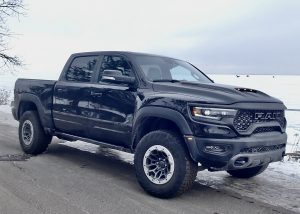
Built to conquer any on- or off-road challenge, the new Ram TRX is armed with a 6.2-liter supercharged V8 with 702 horsepower.
By John Gilbert
Before the surprising warm-up of March descended on the Upper Midwest, it seemed as though we might be headed for the most severe winter ever, with ice-fishing houses out a mile or so from the North Shore of Lake Superior, and wind-chills down in the 40 or 50 below range. A light covering of lake-effect snow had descended as I reached for the door handle of the shiny black Ram TRX pickup I was driving, and a fellow trudging to his pickup nearby said, “Does that thing go through the snow?”
“As fast as you’d like,” I answered.
And that is an accurate assessment. The TRX will go wherever it wants, and you almost feel as though hanging on is the major part of driving it, if only it wasn’t so surprisingly manageable.
Ford has not made many mistakes when it comes to building pickup trucks of all shapes and sizes and potential, but the Dearborn builder of the top-selling vehicle in the country may have misfired on the latest Ford Raptor — the standard of high-performing and rugged pickups specially built to be undisputed King of the Road, or maybe King of the Off-Road.
Enter “dispute,” where none previously existed, because Ram, the brash challenger, has delivered the TRX, which you know is a big hit because its unofficial nickname preceded it: “T-Rex.”
If you look closely, the stylized “R” in TRX wraps around the lower-right corner of the “T” in a manner that just might be intended to look like something out of the Umpteenth Jurassic Park movie, where a giant T-Rex opens its jaws to consume a giant bird — a Raptor, perhaps? — and it holds that pose wherever you spot the TRX logo. Which is on virtually every flat surface, from the engine cover to the tailgate lid and elsewhere. The flair was subdued a bit by the Diamond Black Crystal Pearl-Coat exterior, and black-on-black seems to fit the TRX’s mood.
We are talking prehistoric stuff here, and in a lot of ways the pickup truck wars are somewhat prehistoric. Used to be everybody wanted a car, and the only people who bought pickup trucks were those who needed them, for hauling, farming or towing. So it was easy to distinguish: You bought a car because you wanted one; you bought a truck because you needed one.
That equation has long since vanished, as more and more people want pickups, not only for utilitarian purposes but because they have risen to the upper reaches of style and function, with an over-riding amount of macho attractiveness. Ford’s Raptor has become the favorite among off-roaders, because it comes loaded from the factory with high-output shocks, suspension, front and rear end sustainable parts, and lots of power. The whole Raptor is built wider than the normal F-150. For 2021, a lot of Ford fans were awaiting the new Raptor, and it showed up with Ford’s most potent member of the EcoBoost engine family, a 3.5-liter turbocharged V6 with 450 horsepower and 510 foot-pounds of twin-turbo torque.
Now, 450 horses and 510 foot-pounds are impressive numbers, until you hear the TRX numbers. The spectacular 6.2-liter SRT Hemi V8, supercharged, delivers 702 horsepower and 650 foot-pounds of torque. Read more
New diesels take on traditional pickups
Filed under: Weekly test drives, Autos
By John Gilbert
The “Big Three” phrase refers to American vehicle competition among General Motors, Ford and Chrysler Corporation, which remains heated today, particularly regarding pickup trucks. The Ford F-150, Chevrolet Silverado and Dodge Ram — just Ram, now, thank you — which are all very capable and competitive full-size pickups.
As fun as it has been to examine and evaluate the newest things from those three every year, there also have been new-age competitors, such as the Toyota Tundra and Nissan Titan, which came on the scene a couple decades back and offer new threats, and the midsize Honda Ridgeline.
The most exciting thing in the past couple of years, though, has been the quest for new economical powertrains. Most recently, Ram passed the Silverado for second place to the all-winning Ford F-150, and then Ram added a couple new diesel-powered models. My favorite was the 3.0 Eco-Diesel, taking advantage of Ram being owned by Fiat, which has all sorts of connections with car and truck makers in Europe, and provided the new turbo-diesel.
Ford, which also has a diesel made in-house, made the most-recent wave, with a new hybrid version of its 3.5-liter V6 EcoBoost twin-turbo, coupled to electric supplemental power.
But there are more. A surprise emerged from Chevrolet, another surprise from Fiat-Chrysler-Ram with their new Jeep Gladiator, both of which can be fitted with compact, 3-liter diesels. The irony of it all is that the Toyota Tundra must now be considered the most tradition-bound in the segment, as the Tundra relies on sticking with the proven product’s excellence and making it better to impress new buyers. We can examine those three new models.
First, let’s check out the Gladiator, which honestly appeared to me to be a bit of a novelty — almost a Wrangler with a bed — when I first checked one out. It turns out to be very popular, and people who have always wanted a Jeep for its obvious ruggedness and outdoorsy image, can now get a Jeep and a pickup too, with the Gladiator.
Having driven and reviewed the Gladiator with Chrysler’s tried and true and powerful 3.6-liter V6, I was presented with another one, a 2021 model, in dazzling Firecracker Red that was close to red-orange, and easy to spot coming at you or in a parking lot. Read more
WRX STI still sets pace for Subarus
Filed under: Weekly test drives, Autos

The air was colder than Lake Superior’s water, creating steam as the Subaru WRX STI paused on the North Shore. — Photo by Jack Gilbert.
By John Gilbert
The sun was shining brightly out of the pure blue sky, helping define the phenomenon of wispy clouds of “sea smoke” rising off the North Shore of Lake Superior. My older son, Jack, who often assists my car-testing and photography couldn’t pass it up, getting me to park just right so he could shoot some photos of my test-drive car of the week, a 2021 Subaru WRX STI.
Parking it facing away from the water made the pure-white vehicle appear almost mystical, as if it was a motorized monster rising out of the sea. The attraction, for Jack and for me, was that the WRX STI is a no-compromise screamer, a true hot-rod that dates back decades and still sticks stubbornly to that identity. The photos speak for themselves.
One of the most exciting parts of being able to test-drive the newest models of cars from all over the world is to get an advanced, week-long taste of the delicacy of new designs and new technology — an element that has taken on more significance as we move toward hybrids and all-electric vehicles.
At the same time, sometimes you’ve eaten so many delicacies that it’s time to “clean your palate” between courses by forgetting all the latest high-tech stuff and gorging yourself on “comfort food.” That’s what the 2021 Subaru WRX STI represents. Meatloaf and mashed potatoes, with some sort of vegetable and a salad.
When Subaru went from making somewhat odd flat-opposed engine subcompacts and sedans four decades ago, or so, I watched and drove Subaru models as they strived to make deeper inroads in the standard U.S. car scene, and then it branched off into making a true hot-rod. At the time, Mitsubishi, one of Subaru’s Japanese rivals, was competing in all-terrain endurance racing, and that was where Subaru made its bid.
There were various Subaru models that had grown up before Subaru made its first Impreza subcompact sedan. When going to high performance became a trend, Subaru rebuilt an Impreza with a much more powerful engine, a special manual transmission, greatly strengthened springs and shock absorbers, and they also decided to give it some flash, by adding various air vents and identifiably unique contours. For good measure, Subaru plunked a gigantic airfoil on the rear deck while also carving a gigantic horizontal vent in the hood. Inside, firmer seats and driver-centered instruments made it a unique four-seat, four-door sedan. Read more


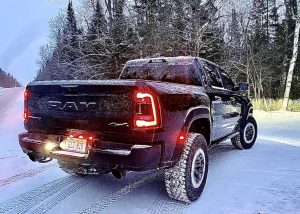
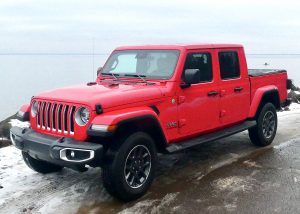
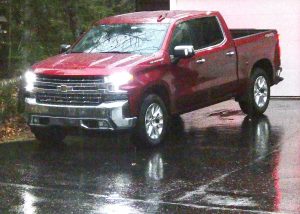
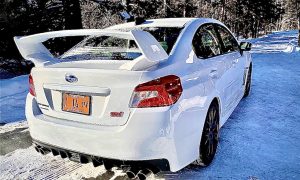
 John Gilbert is a lifetime Minnesotan and career journalist, specializing in cars and sports during and since spending 30 years at the Minneapolis Tribune, now the Star Tribune. More recently, he has continued translating the high-tech world of autos and sharing his passionate insights as a freelance writer/photographer/broadcaster. A member of the prestigious North American Car and Truck of the Year jury since 1993. John can be heard Monday-Friday from 9-11am on 610 KDAL(www.kdal610.com) on the "John Gilbert Show," and writes a column in the Duluth Reader.
John Gilbert is a lifetime Minnesotan and career journalist, specializing in cars and sports during and since spending 30 years at the Minneapolis Tribune, now the Star Tribune. More recently, he has continued translating the high-tech world of autos and sharing his passionate insights as a freelance writer/photographer/broadcaster. A member of the prestigious North American Car and Truck of the Year jury since 1993. John can be heard Monday-Friday from 9-11am on 610 KDAL(www.kdal610.com) on the "John Gilbert Show," and writes a column in the Duluth Reader.